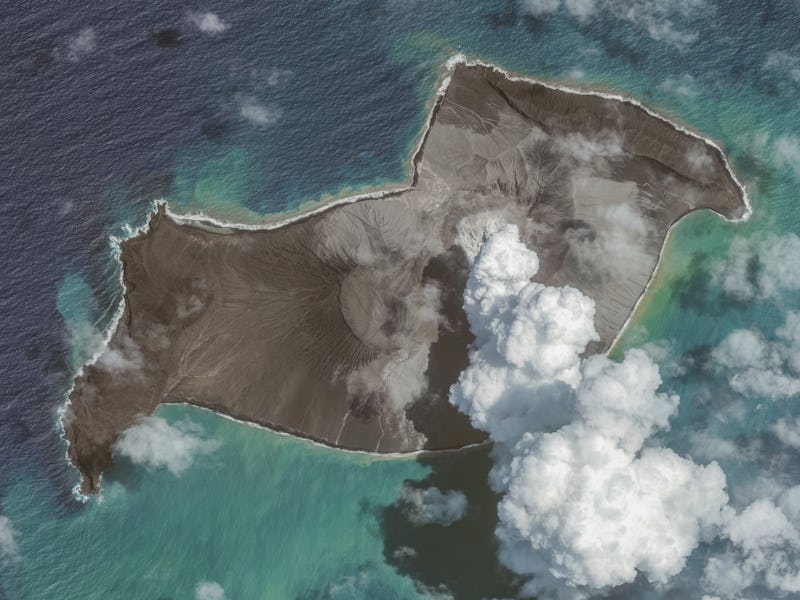Powerful Volcanic Eruption Created "Bubbles" in the Atmosphere
Changes to Earth’s upper atmosphere could be a byproduct of big eruptions — causing hiccups in satellite and GPS communication.

When the eruption of an underwater volcano near Tonga crescendoed into a fiery blast last year, it sent shock waves around the globe. Its eruption was stronger than an atomic bomb and set new records that have since dwarfed the power of most volcanic eruptions in recorded history.
The volcano, called Hunga Tonga-Hunga Ha’apai, was the first ever observed to shoot ash 35 miles above ground into Earth’s mesosphere. It also sent out the fastest atmospheric pressure waves ever recorded and caused several rare tsunamis.
Even though it’s been over a year since the eruption, scientists are still making discoveries about the effects of the blast. One team of experts from Japan announced that the eruption was powerful enough to create a phenomenon in the atmosphere that could interrupt satellite and GPS communications. Their findings were published today in the journal Scientific Reports.
The January 2022 eruption of Hunga Tonga-Hunga Ha’apai, as seen from space.
In Earth’s upper atmosphere, about 50 to 400 miles above ground, an important boundary called the ionosphere sits between our planet and outer space. It’s made of electrically charged particles that absorb dangerous ultraviolet radiation from the Sun. The movement of those particles is easily influenced by changing conditions on and around Earth’s atmosphere.
Upper atmospheric winds and electric fields can sometimes create bubbles in the ionosphere above the equator that form due to uneven particle densities. It might sound benign, but the bubbles can cause disruptions for GPS signals and satellite communications that use the ionosphere to bounce signals through this charged upper layer.
Scientists don’t know much about how events on (and below) Earth’s surface might cause these bubbles to form. But it’s clear that strong air pressure waves can shake up the ionosphere’s density. Given that Tonga’s eruption generated enormous waves of pressure, the researchers hypothesized that the blast could have potentially caused a plasma bubble to form.
An artistical representation of the Tonga volcano sending pressure waves into the atmosphere that triggered disturbances in the ionosphere.
Sure enough, data from the Japan Aerospace Exploration Agency’s Himawari-8 and Arase satellites revealed that the density of charged particles suddenly became higher in the ionosphere around the time the eruption took place.
Even hours before the Tonga volcano blew its top, changes in the ionosphere were already taking place. The data shows that it didn’t even take a full eruption to increase air pressure and cause significant changes far above the surface of Earth.
“The results of this research are significant not only from a scientific point of view but also from the point of view of space weather and disaster prevention,” said study author Atsuki Shinbori, a professor at Nagoya University, in a statement.
Knowing how powerful events like volcanic eruptions and earthquakes shake things up in the ionosphere could help predict future disruptions to GPS and satellite communications, especially in times of crisis.